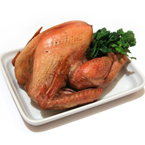Autumn
Autumn or fall is one of the four
temperate seasons. Autumn marks the transition from
summer into winter, in September (Northern Hemisphere)
or March (Southern Hemisphere) when the arrival
of night becomes noticeably earlier.
The equinoxes might be expected to be in the middle
of their respective seasons, but temperature lag
(caused by the thermal latency of the ground and
sea) means that seasons appear later than dates
calculated from a purely astronomical perspective.
The actual lag varies with region. Some cultures
regard the autumnal equinox as "mid-autumn",
others with a longer lag treat it as the start of
autumn. Meteorologists (and most of the temperate
countries in the southern hemisphere) use a definition
based on months, with autumn being September, October
and November in the northern hemisphere, and March,
April and May in the southern hemisphere.
In North America, autumn is usually considered to
start with the September equinox. In traditional
East Asian solar term, autumn starts on or around
8 August and ends on about 7 November. In Ireland,
the autumn months according to the national meteorological
service, Met Éireann, are September, October
and November. However, according to the Irish Calendar
which is based on ancient Gaelic traditions, autumn
lasts throughout the months of August, September,
and October, or possibly a few days later, depending
on tradition. In Australia, autumn officially begins
on March 1 and ends May 31 According to United States
tradition, autumn runs from the day after Labor
Day (i.e. the Tuesday following the first Monday
of September) through Thanksgiving (i.e. the fourth
Thursday in November), after which the holiday season
that demarcates the unofficial beginning of winter
begins.
(Source: Wikipedia.org)
|
















